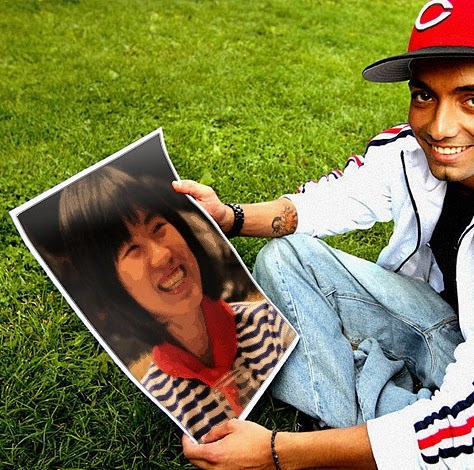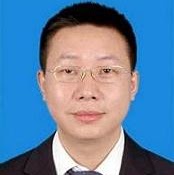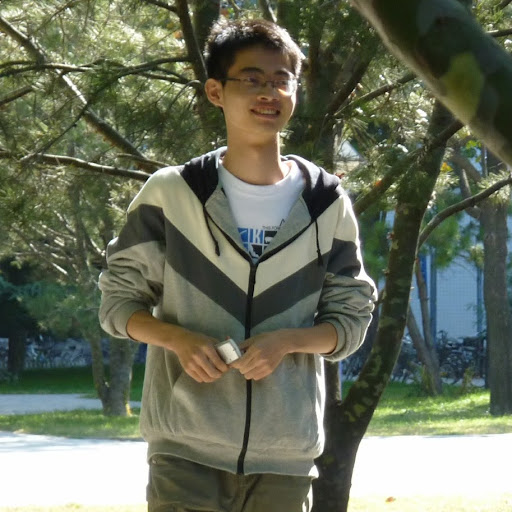Hui Bin Huang
age ~51
from Monroeville, NJ
- Also known as:
-
- Hui B Huang
- Hui Jun Huang
- Huibin Huang
- Hui Bin Huanghui
- Ben Huang
- Hulbin Huang
- Hill Hillan
- N Huang
- N G
- Hill G
- Phone and address:
-
318 Meadowbrook Dr, Aura, NJ 08343
8562231863
Hui Huang Phones & Addresses
- 318 Meadowbrook Dr, Monroeville, NJ 08343 • 8562231863
- Glassboro, NJ
- 3140 Wisteria Ln, Fayetteville, NC 28314 • 9108688708
- 220 Sawtooth Dr, Fayetteville, NC 28314 • 9108688708
- Lafayette, LA
- Abington, PA
- Gloucester, NJ
- Philadelphia, PA
Resumes

Senior Recruitment Consultant
view sourceWork:
Senior Recruitment Consultant

Hui Huang
view source
Hui Huang
view source
Hui Huang
view sourceSkills:
Microsoft Office
Microsoft Word
Microsoft Excel
English
Customer Service
Windows
Microsoft Word
Microsoft Excel
English
Customer Service
Windows

Hui Huang
view source
Hui Huang
view source
Hui Chih Hilda Huang
view source
Hui Huang
view sourceMedicine Doctors

Hui L. Huang
view sourceSpecialties:
Internal Medicine
Work:
Montefiore Medical GroupMontefiore Medical Group Urgent Care
2532 Grand Concourse, Bronx, NY 10458
7189601500 (phone), 7189601501 (fax)
2532 Grand Concourse, Bronx, NY 10458
7189601500 (phone), 7189601501 (fax)
Education:
Medical School
Albert Einstein College of Medicine at Yeshiva University
Graduated: 1982
Albert Einstein College of Medicine at Yeshiva University
Graduated: 1982
Procedures:
Arthrocentesis
Electrocardiogram (EKG or ECG)
Pulmonary Function Tests
Vaccine Administration
Electrocardiogram (EKG or ECG)
Pulmonary Function Tests
Vaccine Administration
Conditions:
Abdominal Hernia
Abnormal Vaginal Bleeding
Allergic Rhinitis
Breast Disorders
Chronic Sinusitis
Abnormal Vaginal Bleeding
Allergic Rhinitis
Breast Disorders
Chronic Sinusitis
Languages:
English
Spanish
Spanish
Description:
Dr. Huang graduated from the Albert Einstein College of Medicine at Yeshiva University in 1982. She works in Bronx, NY and specializes in Internal Medicine. Dr. Huang is affiliated with Montefiore Medical Center.

Hui Huang
view sourceSpecialties:
Hematology/Oncology
Work:
Kaiser Permanente Medical GroupKaiser Permanente Medical Center
1 Quality Dr, Vacaville, CA 95688
7076244000 (phone), 7076242051 (fax)
1 Quality Dr, Vacaville, CA 95688
7076244000 (phone), 7076242051 (fax)
Procedures:
Chemotherapy
Conditions:
HIV Infection
Leukemia
Lung Cancer
Malignant Neoplasm of Female Breast
Multiple Myeloma
Leukemia
Lung Cancer
Malignant Neoplasm of Female Breast
Multiple Myeloma
Languages:
English
Description:
Dr. Huang works in Vacaville, CA and specializes in Hematology/Oncology. Dr. Huang is affiliated with Kaiser Permanente Medical Center - Roseville.

Hui Ling Huang
view sourceSpecialties:
Internal Medicine
Work:
China Town Service Center
767 N Hl St STE 200B, Los Angeles, CA 90012
2138081778 (phone), 2136809427 (fax)
767 N Hl St STE 200B, Los Angeles, CA 90012
2138081778 (phone), 2136809427 (fax)
Languages:
Chinese
English
Spanish
Vietnamese
English
Spanish
Vietnamese
Description:
Ms. Huang works in Los Angeles, CA and specializes in Internal Medicine.

Hui H Huang
view sourceSpecialties:
Internal Medicine
Hematology
Medical Oncology
Hematology & Oncology
Hematology
Medical Oncology
Hematology & Oncology
Education:
Shanghai Medical University (1991)
License Records
Hui En Huang
License #:
MA.002828 - Active
Issued Date:
Aug 14, 2014
Expiration Date:
Jun 10, 2017
Type:
Medication Administration (V)
Hui En Huang
License #:
PNT.047465 - Expired
Issued Date:
Jul 8, 2014
Expiration Date:
Sep 9, 2014
Type:
Pharmacy Intern
Hui En Huang
License #:
PST.020778 - Active
Issued Date:
Sep 9, 2014
Expiration Date:
Dec 31, 2017
Type:
Pharmacist
Hui Hua Huang
License #:
25938 - Expired
Issued Date:
Nov 7, 2007
Renew Date:
Nov 7, 2007
Expiration Date:
May 31, 2008
Type:
Certified Public Accountant
Isbn (Books And Publications)

Das Rechtssystem Des Bankuberweisungsverkehrs in Der Vr China
view sourceAuthor
Hui Huang
ISBN #
3899492641

International Securities Markets: Insider Trading Law in China
view sourceAuthor
Hui Huang
ISBN #
9041125574
Lawyers & Attorneys

Hui Hui Huang - Lawyer
view sourceLicenses:
California - Active 2001
Education:
Golden Gate University School of Law

Hui Huang - Lawyer
view sourceOffice:
Latham & Watkins LLP
Specialties:
Media Entertainment
Technology Transactions
Litigation
Intellectual Property
Technology Transactions
Litigation
Intellectual Property
ISLN:
922151355
Admitted:
2010
University:
University of California, Los Angeles, B.S., 2006
Law School:
University of Pennsylvania Law School, J.D., 2010
Name / Title
Company / Classification
Phones & Addresses
Vanfo United Enterprises
Recycling Services
Recycling Services
2428 W 13 Ave, Vancouver, BC V6K 2S8
6047168618
6047168618
Director, Vice President
Sinocoking Coal and Coke Chemical Industries, Inc
Vanfo United Enterprises
Recycling Services
Recycling Services
6047168618
HONGLI CLEAN ENERGY TECHNOLOGIES CORP
Principal
Modern Solutions N.A. Company
National Commercial Bank · Nonclassifiable Establishments
National Commercial Bank · Nonclassifiable Establishments
125 Fox Run Dr, Collegeville, PA 19426
Applicant
Huang Corporation
Us Patents
-
5-Oxo-5,8-Dihydro-Pyrido-Pyrimidine As Inhibitors Of C-Fms Kinase
view source -
US Patent:7642270, Jan 5, 2010
-
Filed:Sep 12, 2006
-
Appl. No.:11/519611
-
Inventors:Mark R. Player - Phoenixville PA, US
Hui Huang - Monroe Township NJ, US
Daniel A. Hutta - Belle Mead NJ, US
Renee L. DesJarlais - Saint Davids PA, US -
Assignee:Janssen Pharmaceutica N.V. - Beerse
-
International Classification:A61K 31/44
C07D 471/06 -
US Classification:514303, 544279
-
Abstract:The invention addresses the current need for selective and potent protein tyrosine kinase inhibitors by providing potent inhibitors of c-fms kinase. The invention is directed to the novel compounds of Formula I:.
-
5-Oxo-5,8-Dihydro-Pyrido-Pyrimidines As Inhibitors Of C-Fms Kinase
view source -
US Patent:7728003, Jun 1, 2010
-
Filed:Sep 12, 2006
-
Appl. No.:11/519662
-
Inventors:Mark R. Player - Phoenixville PA, US
Hui Huang - Monroe Township NJ, US
Hu Huaping - Pennington NJ, US
Renee L. DesJarlais - Saint Davids PA, US -
Assignee:Janssen Pharmaceutica N.V. - Beerse
-
International Classification:A61K 31/44
C07D 471/04 -
US Classification:514303, 544279
-
Abstract:The invention addresses the current need for selective and potent protein tyrosine kinase inhibitors by providing potent inhibitors of c-fms kinase. The invention is directed to the novel compounds of Formula I:.
-
Leveraged Poromeric Polishing Pad
view source -
US Patent:20210323115, Oct 21, 2021
-
Filed:Apr 18, 2020
-
Appl. No.:16/852418
-
Inventors:- Newark DE, US
Katsumasa KAWABATA - Kyoto, JP
Hui Bin HUANG - Monroeville NJ, US
Akane UEHARA - Kyoto, JP
Yosuke TAKEI - Shimane, JP -
International Classification:B24B 37/24
-
Abstract:The invention provides a porous polyurethane polishing pad that includes a porous matrix. The matrix has large pores that extend upward from a base surface and open to an upper surface. The large pores are interconnected with tertiary pores, a portion of the large pores is open to a top polishing surface and at least a portion of the large pores extend to the top polishing surface. Spring-arm sections connect lower and upper sections of the large pores. The spring-arm sections all are in a same horizontal direction as measured from the vertical orientation and they combine for increasing compressibility of the polishing pad and contact area of the top polishing surface during polishing.
-
Offset Pore Poromeric Polishing Pad
view source -
US Patent:20210323116, Oct 21, 2021
-
Filed:Apr 18, 2020
-
Appl. No.:16/852422
-
Inventors:- Newark DE, US
Katsumasa KAWABATA - Kyoto, JP
Hui Bin HUANG - Monroeville NJ, US
Akane UEHARA - Kyoto, JP
Yosuke TAKEI - Shimane, JP -
International Classification:B24B 37/26
B24B 37/24 -
Abstract:The invention provides a porous polyurethane polishing pad that includes a porous matrix having large pores that extend upward from a base surface and open to an upper surface. The large pores extend to the top polishing surface and have lower and upper sections with a vertical orientation. The lower and upper sections are offset in a horizontal direction. Middle-sized pores with a columnar shape and a vertical orientation originate adjacent the middle sections and small pores with a columnar shape and a vertical orientation originate between the middle-sized pores. The pores combine for increasing compressibility of the polishing pad and contact area of the top polishing surface during polishing.
-
Method Of Forming Leveraged Poromeric Polishing Pad
view source -
US Patent:20210323202, Oct 21, 2021
-
Filed:Apr 18, 2020
-
Appl. No.:16/852420
-
Inventors:- Newark DE, US
Katsumasa KAWABATA - Kyoto, JP
Hui Bin HUANG - Monroeville NJ, US
Akane UEHARA - Kyoto, JP
Yosuke TAKEI - Shimane, JP -
International Classification:B29C 43/30
B24B 37/24
C08J 5/18
B29C 43/00 -
Abstract:The invention provides a method of forming porous polyurethane polishing pad that includes feeding liquid polyurethane onto a web sheet with a doctor blade while back tensioning the web. Coagulating liquid polyurethane onto the web sheet forms a two-layer substrate. The two-layer substrate has a porous matrix wherein the porous matrix has large pores extending upward from a base surface and open to an upper surface. Spring-arm sections connect lower and upper sections of the large pores.
-
Tapering Method For Poromeric Polishing Pad
view source -
US Patent:20180036860, Feb 8, 2018
-
Filed:Aug 4, 2016
-
Appl. No.:15/229009
-
Inventors:- Newark DE, US
Kazutaka Miyamoto - Mie, JP
Katsumasa Kawabata - Kyoto, JP
Henry Sanford-Crane - Elkton MD, US
Hui Bin Huang - Monroeville NJ, US
George C. Jacob - Newark DE, US
Shuiyuan Luo - Newark DE, US -
International Classification:B24B 37/24
B24D 18/00
B24B 37/26 -
Abstract:The method forms a porous polyurethane polishing pad by coagulating thermoplastic polyurethane to create a porous matrix having large pores extending upward from a base surface and open to an upper surface. The large pores are interconnected with small pores. Heating a press to temperature below or above the softening onset temperature of the thermoplastic polyurethane forms a series of pillows. Plastic deforming side walls of the pillow structures forms downwardly sloped side walls. The downwardly sloped side walls extend from all sides of the pillow structures. The large pores open to the downwardly sloped sidewalls are less vertical than the large pores open to the top polishing surface and are offset 10 to 60 degrees from the vertical direction.
-
Tapered Poromeric Polishing Pad
view source -
US Patent:20180036862, Feb 8, 2018
-
Filed:Aug 4, 2016
-
Appl. No.:15/228988
-
Inventors:- Newark DE, US
Kazutaka Miyamoto - Mie, JP
Katsumasa Kawabata - Kyoto, JP
Henry Sanford-Crane - Elkton MD, US
Hui Bin Huang - Monroeville NJ, US
George C. Jacob - Newark DE, US
Shuiyuan Luo - Newark DE, US -
International Classification:B24B 37/26
B24B 37/24 -
Abstract:The porous polyurethane polishing pad includes a porous polyurethane matrix having large pores extending upward from a base surface and open to a polishing surface. A series of pillow structures is formed from the porous matrix that include the large pores and the small pores. The pillow structures have a downward surface extending from the top polishing surface for forming downwardly sloped side walls at an angle from 30 to 60 degrees from the polishing surface. The large pores open to the downwardly sloped sidewalls and are less vertical than the large pores. The large pores are offset 10 to 60 degrees from the vertical direction in a direction more orthogonal to the sloped sidewalls.
-
Substituted Benzothiophenyl Derivatives As Gpr40 Agonists For The Treatment Of Type Ii Diabetes
view source -
US Patent:20170291908, Oct 12, 2017
-
Filed:Apr 11, 2017
-
Appl. No.:15/484174
-
Inventors:- Beerse, BE
Mark R. Player - Phoenixville PA, US
Hui Huang - Blue Bell PA, US
Michael P. Winters - Morgantown PA, US -
International Classification:C07D 495/04
C07D 409/14
C07D 409/12 -
Abstract:Disclosed are compounds, compositions and methods for treating of disorders that are affected by the modulation of the GPR40 receptor. Such compounds are represented by Formula (I) as follows:wherein U, U, U, R, R, Z, and W are defined herein.
Classmates

Heald Business College, O...
view sourceGraduates:
Guo Hui Huang (1996-1997),
Gloria Wayenberg (1967-1969),
Sandra Fritschle (1993-1994),
Fernando Cubangbang (1990-1991),
Tamahtra Mcclure (1992-1994)
Gloria Wayenberg (1967-1969),
Sandra Fritschle (1993-1994),
Fernando Cubangbang (1990-1991),
Tamahtra Mcclure (1992-1994)
Youtube
Googleplus

Hui Huang
Work:
IPV Capital - Investment Manager (2008)
Education:
Shanghai Jiao Tong University

Hui Huang

Hui Huang
Education:
Xiamen University - International Journalism

Hui Huang
Education:
CIT

Hui Huang
Lived:
Malvern, pa

Hui Huang

Hui Huang

Hui Huang

Peng Hui Huang
view source
Hui Zhen Huang
view source
Hui Juan Huang
view source
Hui Juan Huang
view source
Hui Ling Huang
view source
Hui Hua Huang
view source
Kee Hui Huang
view source
Hsiu Hui Huang
view sourceFlickr
Get Report for Hui Bin Huang from Monroeville, NJ, age ~51













